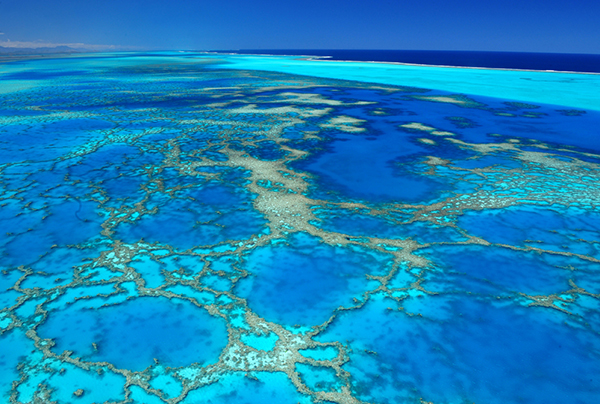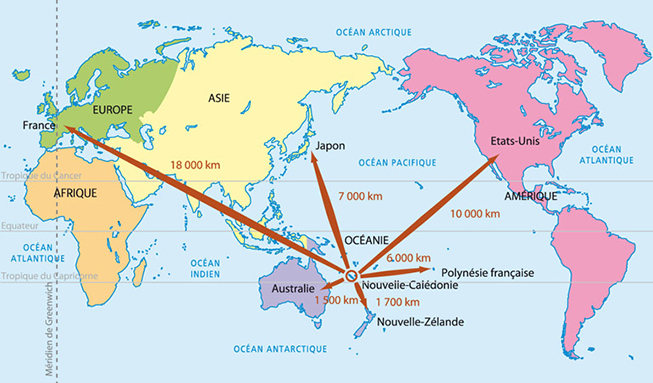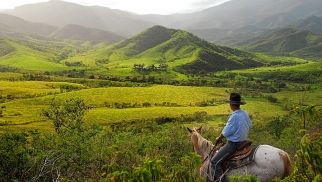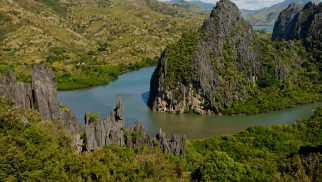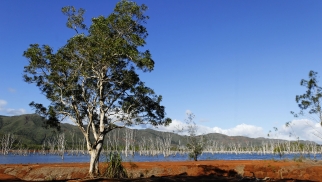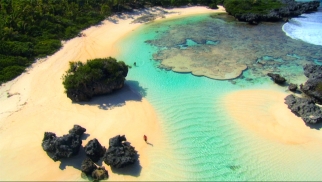|
|
|
Local InformationDistant land, land of contrasts, pristine land... New Caledonia is a diverse and unique destination. Bathed by clear waters at the heart of the Pacific Ocean, lulled year round by gentle trade winds, le Caillou (the Pebble) has more to offer than just its heavenly beaches and brilliant sunshine.
Third largest island in the Pacific after Papua New Guinea and New Zealand, New Caledonia is only 1,500 km east of Australia and 1,700km west of New Zealand, just above the Tropic of Capricorn. Seeing this "terra incognita" in 1774, the British navigator James Cook found a similarity between the mountainous terrain of the Grande Terre and his native Scotland, whose former name was "Caledonia." From coast to coast, New Caledonia, which stretches some 500 kilometres passing through the archipelago of Loyalty Islands, is home to surprising and remarkably diverse landscapes. A mountain range separates the 50 km wide Grande Terre (the main island) into two coasts, both with distinct characteristics.
Covering no less than 23,000 square kilometres, the lagoon of New Caledonia, listed as a World Heritage Site by UNESCO, boasts of the double privilege of being the finest and the largest in the world. From one corner of the archipelago to the other, the southern lagoon is dotted with islands, which are all dream stopovers for amateur sailors. The islets round or long, all seem spread on top of the turquoise lagoon. To navigate from one to the other and to anchor at sunset is to embrace, all the world’s beauty in one glance. Thanks to the shuttles and taxi boats, you can also play Robinson Crusoe on these sand islets or take an exotic trip to Phare Amédée (Lighthouse), or leaving from Noumea, lazing in l’îlot Canard (Duck Island). In the southwest, Noumea, the economic heart of the country concentrating population and economic activity, is a European city in Melanesia. Pavement cafes, luxury boutiques and beaches shaded by palm trees give the city a French Riviera feel, while its relaxed atmosphere and wide blue skies add a touch of the Pacific. To the North of Noumea, along the West Coast rich in its miles of white sandy beaches, and also in its Western decor, with the plains of niaoulis where wildlife is abundant, but also a land of livestock farming where the cowboy is still the hero of the film.. This is where you will meet the Broussards: "cowboys" of the Pacific, with their pioneering spirit and colourful personality. Wetter and steeper, the East Coast is a syncretism of an exotic paradise with lush vegetation, green valleys, magnificent waterfalls, wild rivers, and the Kanak lifestyle relatively preserved. Its tempered tropical climate makes a certain mildness of life possible. It is never too hot or too cold. Indeed, in Noumea the mercury hovers between 15 ° and 36 °. This mild climate is faithfully maintained by the trade winds, the chilly winds that blow from east to southeast, 250 days a year on average. With an area of 19,000 km2 and an Exclusive Economic Zone of 1,450,000 km2, New Caledonia is the second largest territory of French Overseas Territories, after Guyana. Yet it is one of the least populated.
Unlike its neighbouring islands that are volcanic, New Caledonia is a fragment of an ancient continent, which drifted. About 60 million years ago, in the Cretaceous, it was part of the eastern margin of the supercontinent of Gondwana, which, although already highly fragmented, included Australia and Antarctica. New Caledonia was detached and became an island. This isolation protected it from certain developments and destructions, and explains today both the extent of biodiversity and the incredible levels of endemism.
New Caledonia is also the lunar landscape of the Deep South, of pass Plum at Yate. It looks like another world, characterized by red earth, the “maquis minier” and the drowned forest of Lake Yaté. Built with coral limestone, the Loyalty Islands – Ouvéa in the north, Maré in the south, Lifou between the two, and Tiga - and the Ile des Pins, complete the extraordinary panorama. Here the beaches are among the most beautiful and pristine of the Pacifc. Unlike the Grande Terre, Loyalty Islands have a low-elevation relief (the highest point is only 138 m in Mare), but particularly chaotic, because of its geological history. The cliffs on the coasts, as well as vast networks of caves and chasms on the inside are an invitation to walk. The inhabitants of Loyalty Islands keep their ancient traditions alive. This is a suitable place for discovering Kanak culture. You can see all the images in our albums at http://fmmb2014.imgur.com/. References : |

